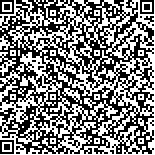| 引用本文: | 方梅梅,王禹煊,王明月,郑和龙,张璐,向沙沙,张国庆,李余动.Windows下16S rRNA基因扩增子测序数据分析的简易流程[J].生物信息学,2018,16(4):239-245. |
| FANG Meimei,WANG Yuxuan,WANG Mingyue,ZHENG Helong,ZHANG Lu,XIANG Shasha,ZHANG Guoqing,LI Yudong.A simple pipeline to analyze 16S rRNA amplicon sequencing data in the Windows[J].Chinese Journal of Bioinformatics,2018,16(4):239-245. |
|
| 摘要: |
| 微生物组数据分析需要掌握Linux系统操作,这对缺乏计算机知识的生物研究人员是一个很大的障碍。为此我们设计了一套在Windows的Linux子系统(WSL)下分析16S rRNA基因扩增子高通量测序数据的简易流程。本流程整合常用的开源软件VSEARCH与QIIME等,能对16S rRNA测序数据进行质量控制、OTU聚类、多样性分析及结果可视化呈现。以唾液微生物组分析为例,详细介绍从原始数据到多样性统计分析过程的参数和命令,及结果解读。教学实践证明,此流程易于学习,并有助于掌握微生物组的基本概念与方法。利用Windows系统最新的WSL功能,本流程方便Windows用户使用大量在Linux上运行的生物信息工具,有助于促进微生物组研究的发展。流程的安装程序与测序数据可从网址(http://www.ligene.cn/win16s/)免费下载使用。 |
| 关键词: 16S rRNA 微生物组 Linux QIIME VSEARCH |
| DOI:10.12113/j.issn.1672-5565.201804007 |
| 分类号:Q752 |
| 文献标识码:A |
| 基金项目:国家自然科学基金项目(No:31671836). |
|
| A simple pipeline to analyze 16S rRNA amplicon sequencing data in the Windows |
|
FANG Meimei, WANG Yuxuan, WANG Mingyue, ZHENG Helong, ZHANG Lu, XIANG Shasha, ZHANG Guoqing, LI Yudong
|
|
(School of Food Science and Biotechnology, Zhejiang Gongshang University, Hangzhou 310018,China)
|
| Abstract: |
| Biologists are required to grasp the operation of Linux systems for microbiome analysis. To overcome this barrier, we developed an easy pipeline for microbiome analysis operating in the Windows Subsystem for Linux (WSL). The pipeline combines several open-access tools (VSEARCH and QIIME) for processing 16S rRNA data, including data quality filtering, OTU clustering, taxonomic analysis, and results visualization. We reported an application of this pipeline in salivary microbiome analysis, which brings the user from raw sequencing reads to diversity-related conclusions. Practical teaching revealed that the pipeline is helpful for beginners to learn the basic concepts and methods of microbiome. It is expected to promote the development of microbiome research by utilizing the latest WSL features of the Windows, which facilitates rapid access to the bioinformatic tools for Windows users. The package and sequencing reads are freely available on the website (http://www.ligene.cn/win16s/). |
| Key words: 16S rRNA Microbiome Linux QIIME VSEARCH |






